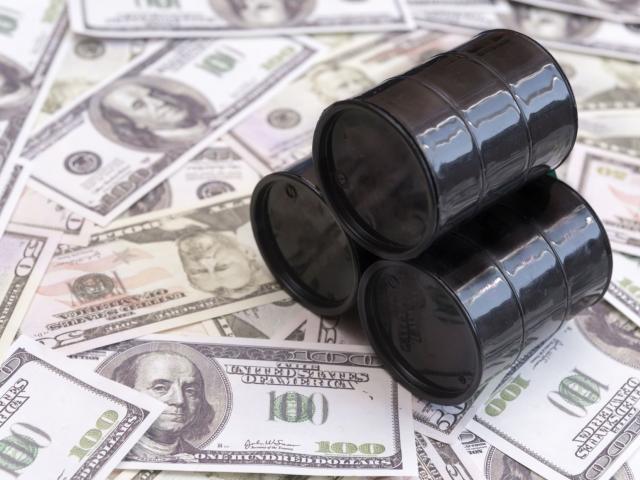.
By Oren Laurent
President, Banc De Binary
The price of gold bullion has enjoyed an imperious run of form for the year to date, notably in April. The confluence of several important factors has contributed to the Bull Run in bullion, and the momentum keeps on growing. The gold futures contract for delivery in June (as at Friday, April 29) closed at $1,294.90 an ounce. This is marginally shy of the critical $1,300 resistance level.
.jpg) In the week or so since Friday, April 22, gold prices have spiked almost 5 percentage points, or $61.20 per ounce. On the last Friday in April, gold made rampant gains of 2.2%, but this must be viewed against the recent performance of the precious metal which has been see-sawing as mixed data in equities, commodities like crude oil, and investor sentiment dominates the news. But gold was not to be outdone by negative investor sentiment and eventually gained traction with traders and investors and rallied to a 15-month high.
In the week or so since Friday, April 22, gold prices have spiked almost 5 percentage points, or $61.20 per ounce. On the last Friday in April, gold made rampant gains of 2.2%, but this must be viewed against the recent performance of the precious metal which has been see-sawing as mixed data in equities, commodities like crude oil, and investor sentiment dominates the news. But gold was not to be outdone by negative investor sentiment and eventually gained traction with traders and investors and rallied to a 15-month high.
If we look to some of the factors that are driving gold prices higher, the most important of them is clearly the Federal Reserve Bank and its policy vis-à-vis quantitative easing and interest rates. The two-day Fed meeting on April 26 and 27 was an important one for the dollar, the US economy and global equities markets. Remember that the greenback is directly impacted by interest rate decisions (federal funds rate) adopted by the Federal Reserve. Currently, the level is 0.25% – 0.50% and the Fed is looking at ways to try and raise rates so that it has more of a cushion in case of an economic contraction in the future. As it stands, there is very little stimulus that the Fed can adopt with historically low interest rates. Nonetheless, conditions in the US economy and the global economy do not warrant a 25-basis point rate hike just yet. When Janet Yellen, Stanley Fisher and other policymakers at the Fed collectively agreed that the rates would remain unchanged, equity markets rallied. The relationship between the price of gold in equity markets is clear: when equities are rallying, gold is plunging.
US Economy Showing Signs of Stress Fractures?
There has been an interesting shift taking place with the USD. The dollar was running rampant in 2014, in 2015 and the early part of 2016, but the rally is weakening. Since gold is a dollar-denominated asset, it relies heavily on the strength of the USD for its own performance. With a weaker dollar as evidenced by the US dollar index, foreign buyers of gold are able to purchase substantially more gold for less of their own money. This means that the demand for the precious metal increases, thereby driving up prices in the long-term. At the beginning of the year, the Fed intimated that there would be at least two rate hikes in 2016, but these have been slow in coming given the gradual approach adopted by the world’s premier reserve bank. While gold prices may be inversely correlated with the USD, they are directly correlated with the EUR. Given the poor economic performance of the US economy in recent weeks it makes sense that the Fed would adopt a go-slow approach. The US economic data that has investors somewhat concerned includes the following:
– The US jobless rate is at 5%
– The inflation rate is at 0.90%
– The debt/GDP ratio is 104.17%
– The government budget is -2.5%
Q1 economic growth has been weak in 2016, compared to the same period in 2015, and the year before.
Consumer expenditure for March gained 0.1% month-on-month, but this was markedly lower than the 0.2% (upwardly revised) from February. More importantly, the uptick in personal expenditure is the lowest for 2016.
The USD and the JPY
However, the performance of the US economy typically gains steam moving into the spring and summer and this is likely to repeat in 2016. Perhaps the most significant reason for investors flocking to gold has been the economic policy adopted in Japan.
The Bank of Japan shocked markets when it moved to implement negative interest rates in 2016 for the first time. This sent the Nikkei 225 index into a tailspin and unwittingly resulted in the JPY strengthening against a basket of currencies, notably the USD. It is precisely this reason that dollar weakness is so pervasive.
The Japanese economy is one of the world’s biggest economies and the interaction between the USD/JPY pair has potential to heavily impact on global economic activity. Gold is naturally affected by a weak USD, and it is precisely what we are seeing take place in the markets. The Bank of Japan will not allow the currency to strengthen indefinitely, and market analysts are concerned that it didn’t adopt further quantitative easing policies at its recent meeting. Concern over the policy approach was a catalyst in driving investors towards gold, silver, bonds and related securities. If the gold price rises beyond the critical $1,300 level, we can rest assured that the short-term prospects for the metal are solid. Profit-taking will invariably come into play at some point and result in a selloff of gold, but the long-term trend should persist if global economic conditions remain.
Gold Remains a Preferred Financial Asset
If we turn our attention to technical indicators such as the Relative Strength Index (RSI), it appears as if gold is overbought. We are seeing significant volume in trading activity in the futures markets where long positions on gold for delivery in June and beyond are muscling in on over short-selling of the precious metal.
While the risk/reward ratio is difficult to gauge at this point in time, there are groups of investors avoiding gold futures and instead preferring exchange traded funds. The problem with these markets is the lack of transparency. Proxies do not provide the cost-effectiveness that gold traders are looking for and it is precisely for this reason that these futures contracts for crude oil, silver or gold are not as effective as standard futures contracts. Gold contracts however require traders and investors to have significant market capitalisation available to them. Without this, it is difficult, if not impossible to capitalise on highly liquid contracts. Consider that in January gold futures for delivery in June were at $1,061 – a low point for quite some time.
Regardless, the performance of the yellow metal for 2016 has been at its best in three decades. Sovereign bonds may be generating negative yields for investors, but gold is benefiting with massive cash inflows into ETFs.
It’s not only gold that is rallying; it’s silver too. When the gold price begins to rise, it is based on negative sentiment in the markets. This could either be a fear among investors that inflation will be spiraling out of control soon, or that the global economic outlook is negative. Precisely how long a weak USD will stay intact is anybody’s guess, but as long as the US dollar index tracks weaker gold will continue to remain the financial asset of choice.
Please note that this column does not constitute financial advice.







